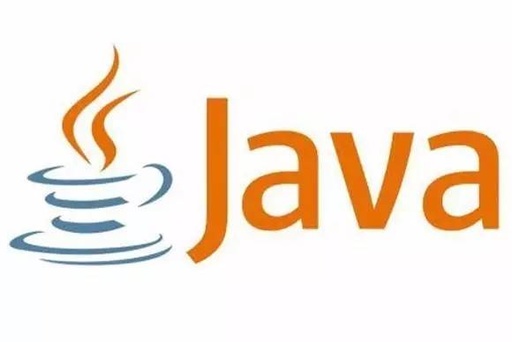Detailed introduction to data area
1. The program counter is the line number indicator of the bytecode executed by the current thread. 2. The Java virtual machine stack thread is private and has the same life cycle as the thread. Used to store information such as local variable tables, operand stacks, dynamic linked lists, method exits, etc. Local variable table storage content: basic data types (boolean, byte, char, short, int, float, long, double) object reference (different from symbol reference, symbol reference is stored in the constant pool) returnAddress type (points to a bytecode instruction The address of long and double type data with a length of 64 bits occupies 2 local variable spaces (slots), and the rest occupies 1 slot. Two exceptions: StackOverflowError: The stack depth requested by the thread > the depth allowed by the virtual machine OutOfMemoryError: Unable to apply for enough memory during dynamic expansion 3. The native method stack (Native Method Stack) is similar to the virtual machine stack, the difference is the Native Method Stack service In the Native method, the virtual machine stack service
1. Java runtime data area for JVM learning

Introduction: Program counter Line number indicator of the bytecode executed by the current thread. 2. Java virtual machine stack is thread private and has the same life cycle as the thread. Used to store information such as local variable tables, operand stacks, dynamic linked lists, method exits, etc.
2. Detailed explanation of Java memory allocation and recycling mechanism (picture)

##Introduction: This article mainly talks about the allocation and recycling mechanism of Java memory, mainly including the Java runtime data area, object creation, garbage collection algorithm and recycling strategy. The reference book is "In-depth Understanding of Java Virtual Machine" by teacher Zhou Zhiming. The author only summarizes and illustrates it based on the content in the book. This part of the content is almost all comprehensible. In order to facilitate understanding and memory, it is presented in the form of pictures, texts or tables as much as possible. 1. Runtime data area The following figure is a memory diagram of the Java virtual machine when it is running: From the figure we can see that the Java memory is divided into...
3. A detailed introduction to the memory runtime data area managed by the Java virtual machine

Introduction: This article mainly introduces For detailed information on the memory runtime data area managed by the Java virtual machine, friends in need can refer to the following
[Related Q&A recommendations]:
vba - python calls win32com.client to make a line chart in excel
The Java synchronization mechanism can be explained through the analogy of a building.
The above is the detailed content of Detailed introduction to data area. For more information, please follow other related articles on the PHP Chinese website!

Hot AI Tools

Undresser.AI Undress
AI-powered app for creating realistic nude photos

AI Clothes Remover
Online AI tool for removing clothes from photos.

Undress AI Tool
Undress images for free

Clothoff.io
AI clothes remover

AI Hentai Generator
Generate AI Hentai for free.

Hot Article

Hot Tools

Notepad++7.3.1
Easy-to-use and free code editor

SublimeText3 Chinese version
Chinese version, very easy to use

Zend Studio 13.0.1
Powerful PHP integrated development environment

Dreamweaver CS6
Visual web development tools

SublimeText3 Mac version
God-level code editing software (SublimeText3)

Hot Topics
 1377
1377
 52
52
 How does Java's classloading mechanism work, including different classloaders and their delegation models?
Mar 17, 2025 pm 05:35 PM
How does Java's classloading mechanism work, including different classloaders and their delegation models?
Mar 17, 2025 pm 05:35 PM
Java's classloading involves loading, linking, and initializing classes using a hierarchical system with Bootstrap, Extension, and Application classloaders. The parent delegation model ensures core classes are loaded first, affecting custom class loa
 How do I implement multi-level caching in Java applications using libraries like Caffeine or Guava Cache?
Mar 17, 2025 pm 05:44 PM
How do I implement multi-level caching in Java applications using libraries like Caffeine or Guava Cache?
Mar 17, 2025 pm 05:44 PM
The article discusses implementing multi-level caching in Java using Caffeine and Guava Cache to enhance application performance. It covers setup, integration, and performance benefits, along with configuration and eviction policy management best pra
 How can I use JPA (Java Persistence API) for object-relational mapping with advanced features like caching and lazy loading?
Mar 17, 2025 pm 05:43 PM
How can I use JPA (Java Persistence API) for object-relational mapping with advanced features like caching and lazy loading?
Mar 17, 2025 pm 05:43 PM
The article discusses using JPA for object-relational mapping with advanced features like caching and lazy loading. It covers setup, entity mapping, and best practices for optimizing performance while highlighting potential pitfalls.[159 characters]
 How do I use Maven or Gradle for advanced Java project management, build automation, and dependency resolution?
Mar 17, 2025 pm 05:46 PM
How do I use Maven or Gradle for advanced Java project management, build automation, and dependency resolution?
Mar 17, 2025 pm 05:46 PM
The article discusses using Maven and Gradle for Java project management, build automation, and dependency resolution, comparing their approaches and optimization strategies.
 How do I create and use custom Java libraries (JAR files) with proper versioning and dependency management?
Mar 17, 2025 pm 05:45 PM
How do I create and use custom Java libraries (JAR files) with proper versioning and dependency management?
Mar 17, 2025 pm 05:45 PM
The article discusses creating and using custom Java libraries (JAR files) with proper versioning and dependency management, using tools like Maven and Gradle.




